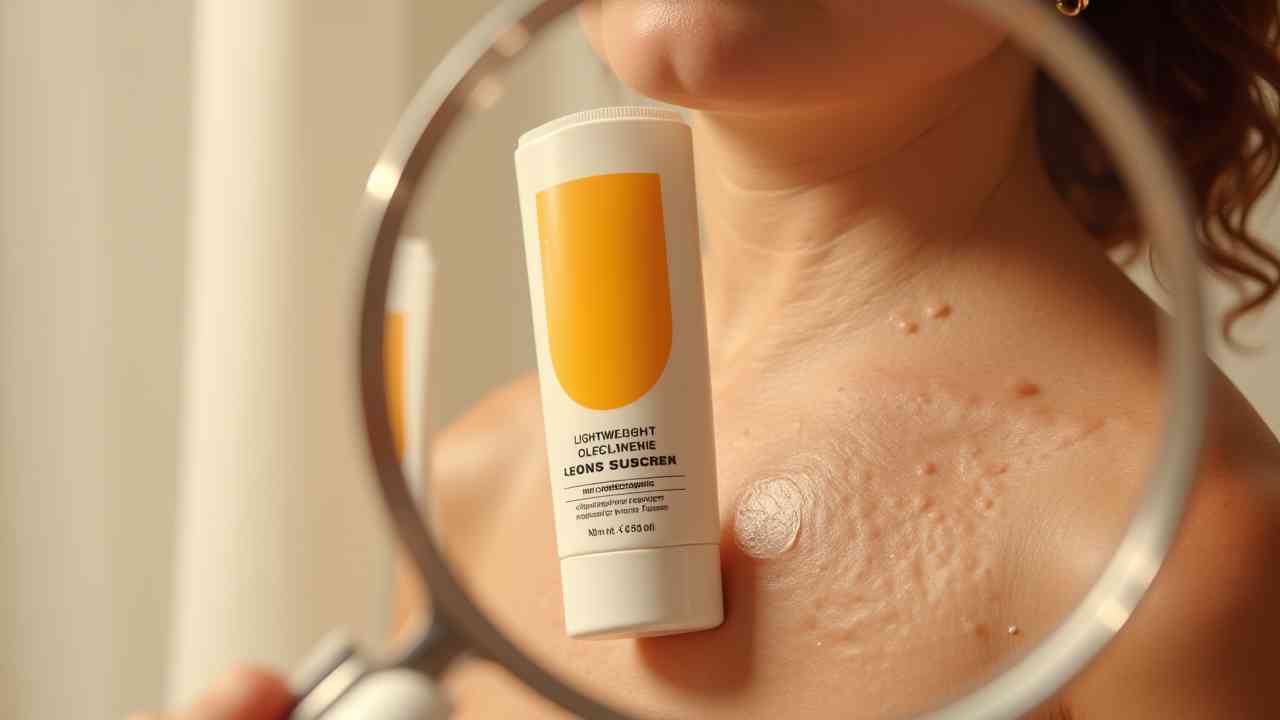
Best Sunscreen for Oily Acne-Prone Skin: The Oil-Free Guide 🧴☀️
The Foundational Challenge Balancing Protection and Breakouts
Finding the right sunscreen for oily, acne-prone skin is notoriously difficult. The primary challenge is that traditional sunscreens are often thick and occlusive. They contain heavy oils that can clog pores and exacerbate breakouts ❌. The ideal formula must provide broad-spectrum protection without adding shine or triggering acne 🧠.
The Non-Negotiable Rules
The best sunscreen for this skin type must adhere to three strict criteria. It must be: 1. Oil-free; 2. Non-comedogenic; and 3. Lightweight/Matte 🔑. Failure to meet these requirements will lead to increased oil production and new blemishes.
The Best Type of Sunscreen Mineral vs. Chemical
Sunscreens are divided into two main categories: chemical and physical (mineral). For sensitive, acne-prone skin, mineral sunscreens are often the preferred and safer choice.
Mineral (Physical) Sunscreens
Mineral sunscreens use active ingredients like Zinc Oxide and Titanium Dioxide 🛡️. These ingredients sit on the skin's surface and physically block UV rays. They are generally considered less irritating and are less likely to penetrate pores. Zinc Oxide, in particular, has anti-inflammatory and mild oil-regulating properties that benefit acne-prone skin 🌟.
Chemical Sunscreens (Use Caution)
Chemical sunscreens absorb UV light and convert it to heat. They can sometimes be irritating and often have a thinner, more elegant texture. Ingredients like Avobenzone and Octinoxate should be used cautiously. They may cause sensitivity or increase inflammation, which can worsen acne.
Key Ingredients and Texture Hacks
The formulation of the sunscreen is critical. Look for ingredients that actively manage oil production and soothe inflammation without clogging pores.
Oil-Control Actives
Sunscreens should contain oil-absorbing ingredients to provide a matte finish. Look for: Niacinamide (Vitamin B3), which reduces redness and controls sebum production. Silica or Perlite are often added to absorb excess oil and provide a powdery, matte texture 💡.
Texture is Crucial
Avoid thick, rich cream textures entirely. Opt for lightweight fluids, gel-creams, or tinted liquids. These spread easily and leave minimal residue. Tinted mineral formulas can help offset the white cast often left by zinc oxide 🎨.
The Forbidden Ingredients List
Strictly avoid these common sunscreen additives, as they are known to clog pores and exacerbate oily skin and acne.
- Heavy Oils: Coconut oil, cocoa butter, and mineral oil. These are highly comedogenic ❌.
- Fragrance/Parfum: Can cause inflammation, which worsens acne and sensitivity.
- Alcohol (High Concentration): Can dry out the skin, causing it to produce more oil in response 💧.
Conclusion: Choose Non-Comedogenic Mineral SPF
The best sunscreen for oily, acne-prone skin is a mineral (Zinc Oxide) based formula. Ensure it is explicitly labeled oil-free and non-comedogenic. Look for a lightweight fluid or gel texture to maintain a matte finish and prevent breakouts 🌟.